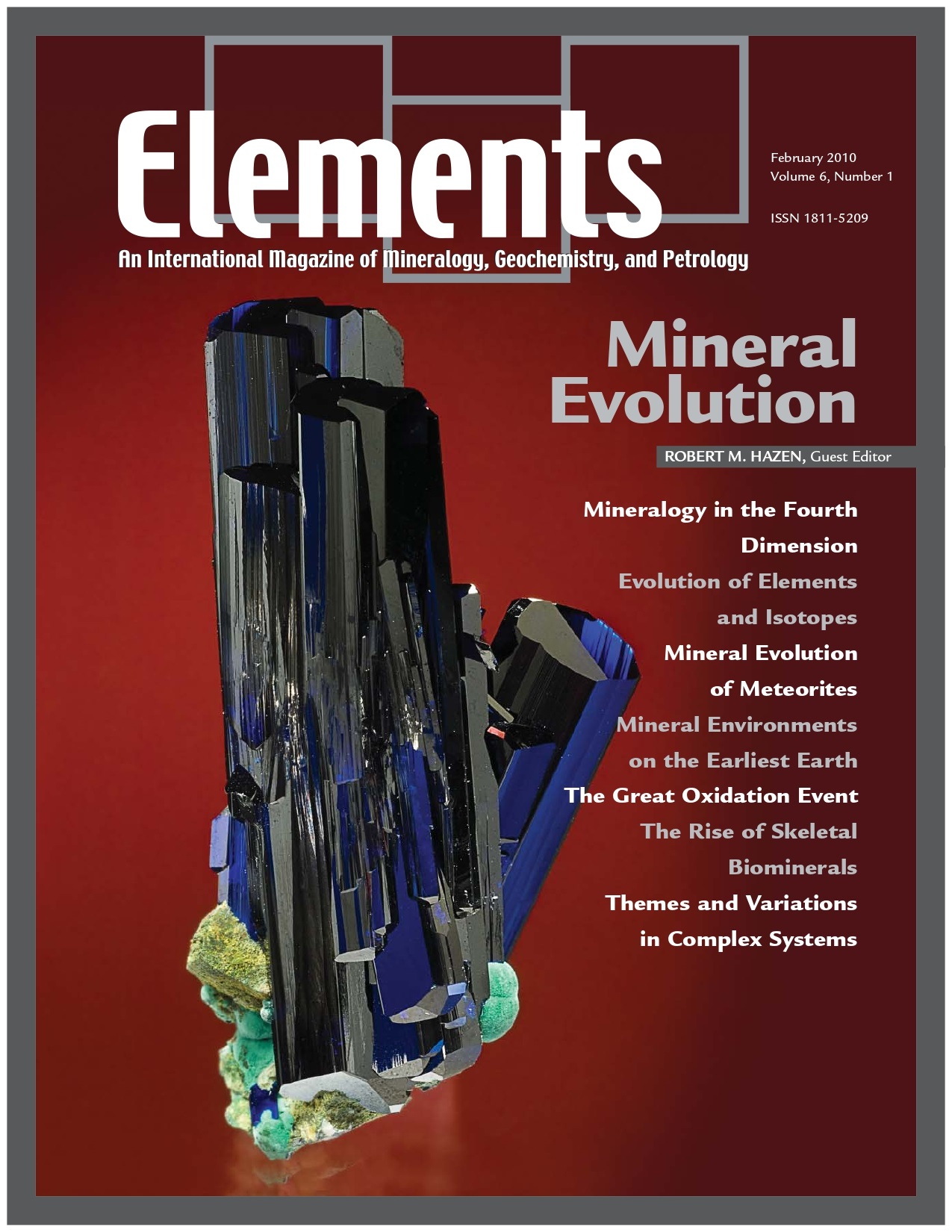
Bentonites – Versatile Clays, April 2009, Vol. 5, No. 2
June 28, 2024
Cosmochemistry, February 2011, Vol. 7, No. 1
June 28, 2024Mineral Evolution, February 2010, Vol. 6, No. 1
$20.00
“Mineral evolution,” the study of Earth’s changing near-surface mineralogy, frames Earth materials research with a historical narrative. This 4.
Mineral Evolution
February 2010, Vol. 6, No. 1
“Mineral evolution,” the study of Earth’s changing near-surface mineralogy, frames Earth materials research with a historical narrative. This 4.5-billion-year story integrates themes of planetary science, including geodynamics, petrology, geochemistry, thermodynamics, geobiology, and more. Mineralogy thus holds the key to unlocking our planet’s history and assumes its rightful central role in the Earth sciences. The mineralogy of terrestrial planets evolves as a consequence of physical, chemical, and biological processes. Starting with ~12 refractory minerals in prestellar molecular clouds, processes in the solar nebula led to the ~250 different minerals found in meteorites. Initial mineral evolution of Earth’s crust depended on a sequence of geochemical and petrologic processes that resulted in an estimated 1500 different mineral species. Ultimately, biological processes produced large-scale changes in atmospheric and ocean chemistry that may be responsible, directly or indirectly, for most of Earth’s 4400 known mineral species. Mineral evolution thus highlights the coevolution of the geo and biospheres.
Why You’ll Love Elements Magazine:
- Expert Contributors: Articles written by renowned researchers in the field of geoscience.
- Engaging Content: Join a community of readers who are passionate about Elements.
- Exceptional Quality: Each issue is printed on high-quality paper with stunning visuals and detailed illustrations that bring complex scientific concepts to life.
Order your copy of the February 2010 issue of Elements magazine today and learn about mineral evolution.
Related products
-
Nanogeoscience, December 2008, Vol. 4, No. 6
$20.00At first glance, nano and Earth seem about as far apart as one can imagine. Nanogeoscience seems to be a word connecting opposites.
-
Early Earth, August 2006, Vol. 2, No. 4
$20.00The earliest Earth was a strange inhospitable world, yet transitions occurred culminating in the evolution of life within the first billion years. The preservation of a sparse and ambiguous rock record has encouraged debate.
-
Water On Mars, June 2006, Vol. 2, No. 3
$20.00During the past several decades, spacecraft data have transformed the planets from astronomical objects into geologic worlds. Mars is the current focus of planetary exploration, and NASA’s objectives for this effort are based on the theme, “follow the water.




